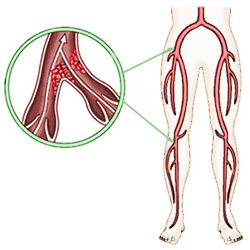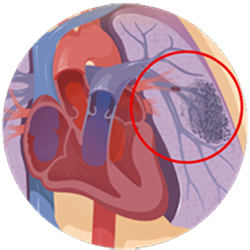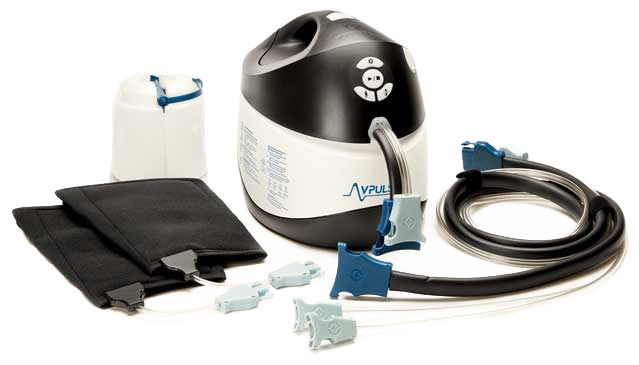A blood clot is a thickening and clumping of blood, usually your body’s protective response to an injury. Typically once the injury has healed, your body safely dissolves the blood clot. Sometimes a blood clot can form inside a deep vein in your body, a dangerous occurrence called Deep Vein Thrombosis or DVT1. Most episodes of DVT occur in the lower leg or thigh, and according to the American Academy of Orthopaedic Surgeons (AAOS) blood clots are a major risk following hip or knee replacement2.


A blood clot in a deep vein can break free and travel through the bloodstream to your lungs. A blood clot in your lungs can stop the flow of blood to the organ; an extremely serious condition called a pulmonary embolism or PE. A PE can damage the lungs and other organs in the body and even cause death. Startlingly, a full one-third of patients who develop DVT will go on to develop a life threatening pulmonary embolism.
"It is estimated that Deep Vein Thrombosis (DVT) and Pulmonary Embolism (PE) cause more deaths each year than breast cancer, AIDS and motor vehicle incidents."
The best way to prevent DVT following orthopaedic surgery is with a combination of medicine and mechanical therapies. Blood thinning medicines are used to reduce the risk of clot formation. Mechanical pumps are used to help maintain blood flow in the legs by compressing the calf or foot, simulating the blood flow you would have during a physical activity like walking.
Your hospital will give you both of these treatments during your hospital stay, but what about when you return home?


“The risk of developing DVT extends for at least 3 months after joint replacement surgery.”2 One study found that for total hip replacement patients 75% of reported DVT-to-PE events happened after the average hospital discharge date. For total knee replacement patients, 57% of reported DVT-to-PE events happened after the average hospital discharge date.4 The study concluded, “the risk of VTE extends beyond the usual period of hospitalization, while the duration of prophylaxis is often shorter than this.”4
Both medicine and mechanical treatments are critical to prevent DVT and resulting PE. Hospitals have adopted the best practices for preventing DVT during your hospital stay, but most patients are discharged without a way to continue the critical mechanical treatment at home. Blood thinning medications are often prescribed for weeks following joint replacement surgery, but mechanical compression pumps are not made available to the majority of patients.
Mechanical compression pumps are a critical part of your recovery at home to help prevent DVT.

The VPulse is a mechanical compression device that offers intermittent pneumatic compression and can improve the blood flow in your legs. Using the VPulse mimics exercise. The compression simulates muscle contraction of the lower leg. It also reduces pain and swelling.
To get a VPulse, enter your name and email here and we will send you more information,
as well as a free risk assesment form to take to your doctor.
DVT is a silent epidemic. It is the most common PREVENTABLE cause of hospital death.
Make sure to get yours today!
